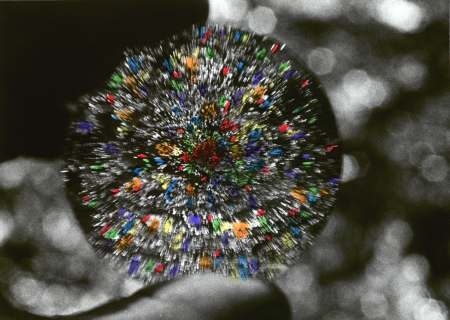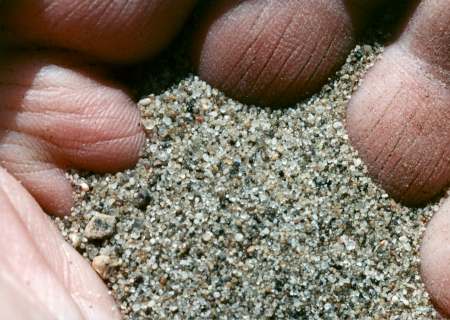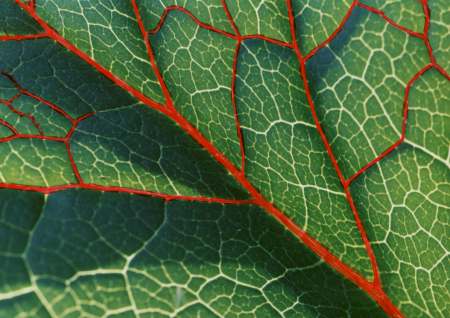8-30.05.1998
Between structure and biology.
I saw the work of Zygmunt Rytka for the first time at an exhibition entitled "The Intellectual Trend in Polish Art after WW II", organized by the BWA in Lublin in 1984. His films, made on 16 mm tape, as well as his photographs, were marked at the time by a specific kind of analysis of conceptual origin (visible especially in his shorter films) and by the influences of the ludic atmosphere of the so-called "Pitch-in Culture".
It was the period of discussions about "the death of the avant-garde" and the time of a search for new forms in art. The avant-garde did not want to accept its fate and mustered its strength a few times in order to manifest its presence "The Polish Inter-media Photography in the 1980s" (1988), "The Caves of Manhattan" (1989), but actually only very few artists stuck to the avant-garde ideas in the next couple of years. And it is only natural that the number of artists engaged in this kind of art in the 90s is gradually growing smaller and smaller.
One of the most persevering of those few is Zygmunt Rytka who has been penetrating, studying and analysing the world of his own construction since the 70s. His ideological aasumptions are based on an empirical analysis conducted through the use of optical and electronic tools, namely a photographic camera and a video camera. But since the 80s Rytka has become more interested in the biological nature of man. That is why he films and photographs everything at an arm's distance. Apparently his approach comes close to the medialism of the 70s, where the given fragments of the world were undergoing a deep, but consciously one-sided structural analysis, which in turn was supposed not only to describe, but also present an empirical and scientific vision of reality, analyzed mostly by fragments, since the presented image was to have been convincing and believable.
Similarly in the 1990s Rytka contains the world of his studies in the space between his right hand, the camera, the eye, the brain, his left hand and then the camera again. In this way he consciously creates a closed circuit. But the borders of the world analyzed in such a way are, of which Rytka is perfectly aware, simultaneously permanent and transitory, real and changeable. An image recorded in this way may make the viewer feel u n c e r t a i n about the appearance of a given fragment of reality. This kind of analysis, one should add, could not have been accepted during the time of the evolution of neo-avant-garde art in the 1970s.
The neuro-optical space, or the space directly marked by the artist, must be in contact with archetypal elements which for Rytka himself are of Far Eastern (Chinese) origin, not European (Greek). One of Rytka's photo-graphs, the source of many others to follow it later, called "Neuro-optical Space" (1993), shows a lens held in a human hand. The element of water is hidden in the background. The picture is dominated by light whose diffusion reveals its mighty biological and creative powers. This black-and-white photo has been coloured with blotches of red, orange, yellow, green, blue and violet (the primary colours of white light). The world, although close at hand, is full of enigmas and mysteries. The photo-graphed lens may seem flat, but at other times it is convex. Similarly the hand holding the lens sometimes seems light, and at other times dark, reminding one of the apparently unbelievable way in which geometrical forms may come into being on the lens. A game is played between white and red colours, between chaos and geometry, which wins this time, and between the depth of the blue and its vast space. What is significant is also the contrast between expressive clouds on the lens and the clouds in the background. Although the photographs are simple, they are based on thorough knowledge of physics and optics, and that is why their effect is often so surprising.
The perpetrator of all transformations of a photographic image is the Sun whose traces (presence) may be seen in the photographs of the "Neuro-optical Space" series in the shape of a point or a small circle. The reality of the world, including the images of water, landscapes and space, is analyzed and presented for empirical evaluation in later works of this series. One of the more interesting works of the exhibition in question shows human fingers and a system of a few expressive lines.
Those photographs came into being as a result of Zygmunt Rytka's own experiments of the past, but they are related to the art marked by the later works of Władysław Strzemiński, who in his solar paintings of the second half of the 1940s was especially interested in the problem of diffusion and diffraction of a beam of light hitting the human eyeball.*
His next series, called "Pictures for Wintertime" (1997) show the hidden water element within the structure of a leaf, water being the blood of any given plant, and within light itself. The colour of green - the pigment of life - is singled out by means of various technical tricks, like long exposure time, camera movement, etc., which in effect were used to create the most unreal, most abstract works by Rytka in recent years.
His most significant pictures show - in great close-up - leaves with red-coloured drawings which emphasize both the structure of a leaf and the symbolic aspect of the work. Thus a non-photographic trick, belonging to the category of modernist drawings, defined anew the limits of the photographic medium, completing it with new values. In its formal aspect this series of pictures resembles allusive abstraction the source of which is usually the world of nature.
This type of photography, employing certain technical manipulations, was called "creation" in the 50s and 60s, but it seems that this term is no longer accurate when used in relation to photography originating from the neo-avant-garde approach. The eternally changing world of nature is enduring - as the photograph showing a green leaf par-tially covered with sand seems to show. It also forms a link with "The Elements" where the power of the elements has been juxtaposed with a hand sinking in the sand and a hand "grasping" water in which sunlight is reflected. Finally there is the analysis of the body and the fire which warms, but also burns. On the other hand the element of wood, which the author approaches with laboratory pincers, that is, in a scientific and somehow distrustful way, seems to be the only one that itself defines the whole process of its materialization, from the seeds, through green branches to a dry stick.
One might ask why there are no pictures showing the element of air. A careful viewer of these simple yet original pictures will observe that air is hidden in every photograph. It allows the fire to exist, comes close to water and earth: it is transparent but eternally present.
Artistic remains of the neo-avant-garde appear to exist in a diffused manner nowadays. Sometimes, as in Łódź, they are unconsciously mixed with artistic postmoder-nism. There are no guides marking out new paths now. Each artist must find and define his own artistic trail. Certainly Zygmunt Rytka belongs to the most genuine artists in this line of work. He does not give up investigative postulates with regard to the world and its inherent laws, but referring to the ideas of the Enlightenment he uses artistic means. Rytka reveals the fragility of the body, of the biological aspect of man confronted with Nature, he reveals man's dependence on Nature and his attempts to oppose it, as well as the uniqueness of structure: of sand, leaves and dermatoglyphics.d
The work of Zygmunt Rytka is situated somewhere between a permanent search for a definition of the structure of a work of art and the passing of biological time, marked by the awareness of that fact. His current works are shaped on the border-line of these two problems, difficult by nature to reconcile in a work of art.
The work of Zygmunt Rytka is situated somewhere between a permanent search for a definition of the structure of a work of art and the passing of biological time, marked by the awareness of that fact. His current works are shaped on the border-line of these two problems, difficult by nature to reconcile in a work of art.
Krzysztof Jurecki
* It seems interesting that Rytka's works had creatively referred to the works of Strzemiński a few times already. In an article called "Nie spełniony projekt?" ("The Unfulfilled Project"), "EXIT" 1993, vol. 3, p. 641, I wrote that "An intereting aspect of the problem is the fact that some of Rytka's works, namely a drawing of the series Momentary works by Władysław Strzemiński, of the 1940s, or in some earlier works by Hans Arp".
Translation by Maciej Świerkocki
Biografical information.
Copyright ©1998 Galeria FF ŁDK, Zygmunt Rytka, Krzysztof Jurecki.




